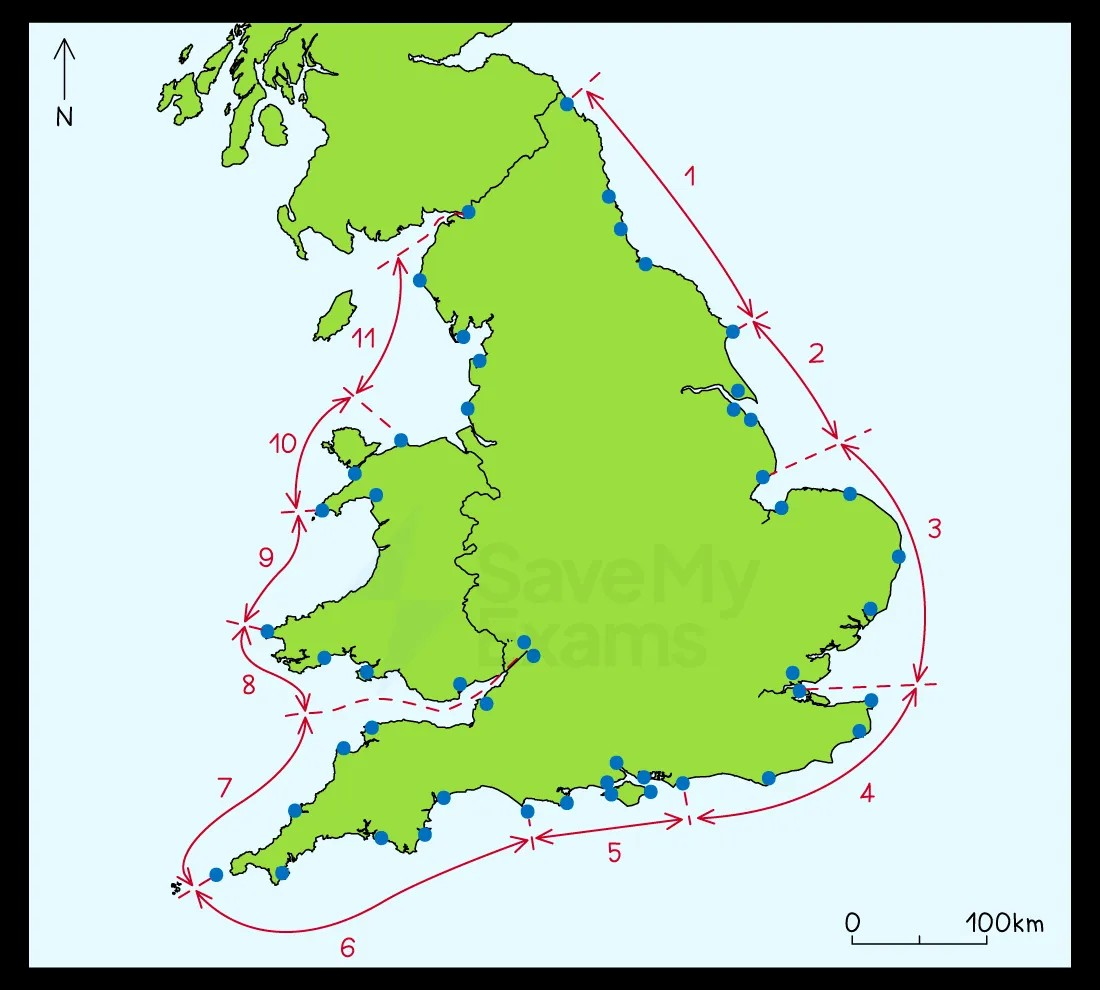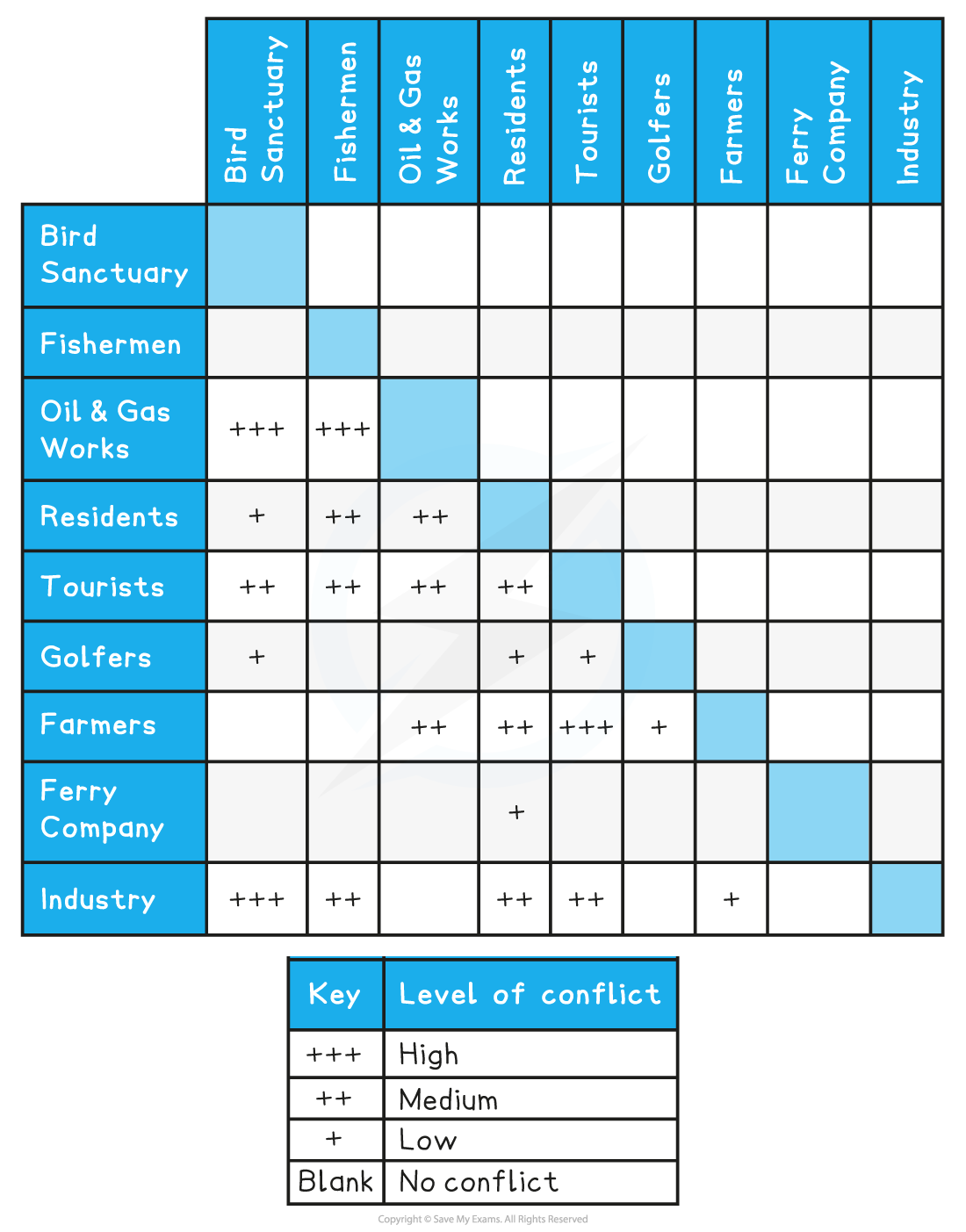Conflict & coastal management (WJEC Eduqas GCSE Geography B): Revision Note
Exam code: C112
Specification links
The notes on this page cover part of 2.1.3 of the WJEC Eduqas B specification – Why is coastal management often controversial?
The role of government and local authorities in shaping shoreline management plans (SMPs).
Conflicting views on coastal management.
The reasons why stakeholders have different views, values and attitudes and why this may lead to controversy.
Shoreline management plans (SMPs)
Shoreline Management Plans (SMPs) set out an approach to managing a coastline from flooding and erosional risk
The plans aim to reduce the risk to people, settlements, agricultural land and natural environments (salt marshes, etc.)
There are four approaches available for coastal management, with differing costs and consequences:
Hold the line
Long-term approach and the most costly
Build and maintain coastal defences so the current position of the shoreline remains the same
Hard engineering is the most dominant method used, with soft engineering used to support
Advance the line
Build new defences to extend the existing shoreline
Involves land reclamation
Hard and soft engineering are used
Managed realignment or retreat
Some or all coastal defences are removed, allowing the coastline to move naturally
Over time, the land becomes flooded marshes, effectively protecting the land behind
It is the most natural approach to coastal defence, as it doesn't need maintenance and creates new habitats for animals and plants
However, the land is lost to the sea, which brings conflict, loss of livelihood and saltwater damage to existing ecosystems
Mostly soft engineering with some hard engineering to support
Do nothing
The cheapest method, but most controversial of the options
The coast is allowed to erode and retreat landward
No investment is made in protecting the coastline or defending against flooding, regardless of any previous intervention
Conflicting views on coastal management
Careful management of coastal regions is necessary for sustainability
There are conflicting views about using a particular type of engineering for coastal defence
Most coastal managers aim to use a range of methods depending on the value of what is being protected
This method is known as Integrated Coastal Zone Management (ICZM)
ICMZ aims to use a combination of methods to best reflect all stakeholders' needs
Coastal strategies
Management of coastal regions is performed by identifying coastal cells
This technique breaks a long coastline into manageable sections and helps identify two related risks:
The risk of erosion and land retreat
The risk of flooding
Identifying risks allows resources to be used efficiently to limit their impacts
The 'cost-to-benefit' is easier to calculate using coastal cells

How is an approach chosen?
Deciding on an approach is complex and depends on:
Decisions about which approach to apply are complex and depend on:
The economic value of the resources that would be protected, e.g., land, homes, etc.
Engineering solutions: It might not be possible to 'hold the line' for moving landforms such as spits or unstable cliffs
Cultural and ecological value of land: Historic sites and areas of unusual diversity
Community pressure: Local campaigns to protect the region
Social value of communities: Long-standing, historic communities
Different activities and needs bring people and ecosystems together
Development such as homes, shops, roads, etc.
Nature reserves
Industries such as ports, fishing and aquaculture
Tourism
Agriculture
This leads to competition for space
Conflict arises when coastal development is given a higher priority than coastal conservation
Examiner Tips and Tricks
Make sure you consider all the options here. Conflict resolution can be achieved with a mix of strategies, but achieving this is not always straightforward. Therefore, you need to be able to consider the issues that may arise.
Conflict between coastal users
Coastal users and wildlife are referred to as stakeholders
Each stakeholder has a different priority or need
Wildlife wants an unpolluted, safe and quiet environment
Local residents want jobs, clean beaches, affordable housing and schools
Tourists want beaches, hotels, B&Bs, entertainment, holiday homes, and marinas
Employers want building space, offices, and factories
Developers want areas by the sea for tourists—hotels, duplexes, golf courses
Fishermen want harbours, unpolluted waters, and ease of access to the sea
Farmers want well-drained land, sheltered from prevailing winds
The government and councils want to build offshore wind farms and coastal defences
Transport companies want good road networks and well-connected ports and terminals
Relationship between stakeholders and coastal zone issues
The different needs of stakeholders often conflict as they compete for the same resources
Agriculture
There are several consequences of increased agriculture in coastal areas, including:
Fertiliser and pesticide overuse
Increased livestock density
Water overabstraction
Animal waste disposal
Land reclamation
The consequences of this land use are:
Species and habitat loss
Eutrophication
Water pollution
Coastal squeeze
Urbanisation and transport
Increased populations in coastal areas lead to:
change of land use (car parks, ports, etc.)
waste disposal
fuel spillages
change of land use
water abstraction
sewage disposal
These consequences can lead to:
increased flooding
congestion
pollution
loss of habitats
increase weeds and invasive species
Tourism and recreation
Tourism and recreation activities are increasing in coastal areas, which leads to:
the building of harbours and marinas
waste disposal
fuel spillages
change of land use
water abstraction
sewage disposal
The consequences of this include:
congestion
pollution (noise, light, visual and smell)
loss of habitats
loss of species
litter
fuel spills
Fisheries and aquaculture
Fisheries and aquaculture lead to:
the building of ports and fish processing facilities
road networks
increased transport
fish farm pollution
water abstraction
The consequences of this include:
overfishing
pollution on beaches
habitat damage
pollution (water, smell, visual and noise) pollution
increased seagull activity
Industry
The increase in industry in the coastal zone leads to:
land-use change
change in tidal range
power stations (nuclear and gas)
natural resource extraction
road networks
cooling water/abstraction
waste pollution (chemical, biological, nuclear, etc.)
The consequences of this include:
thermal pollution
habitat destruction, change and loss
water eutrophication
water pollution
visual eyesore
Conflict matrix
The level of conflict varies depending on who and what the needs are
This can be shown in a conflict matrix

Examiner Tips and Tricks
A conflict matrix is one method of displaying information and provides a subjective response. You can disagree with the above levels of conflict, but you must justify your opinion.

Unlock more, it's free!
Did this page help you?